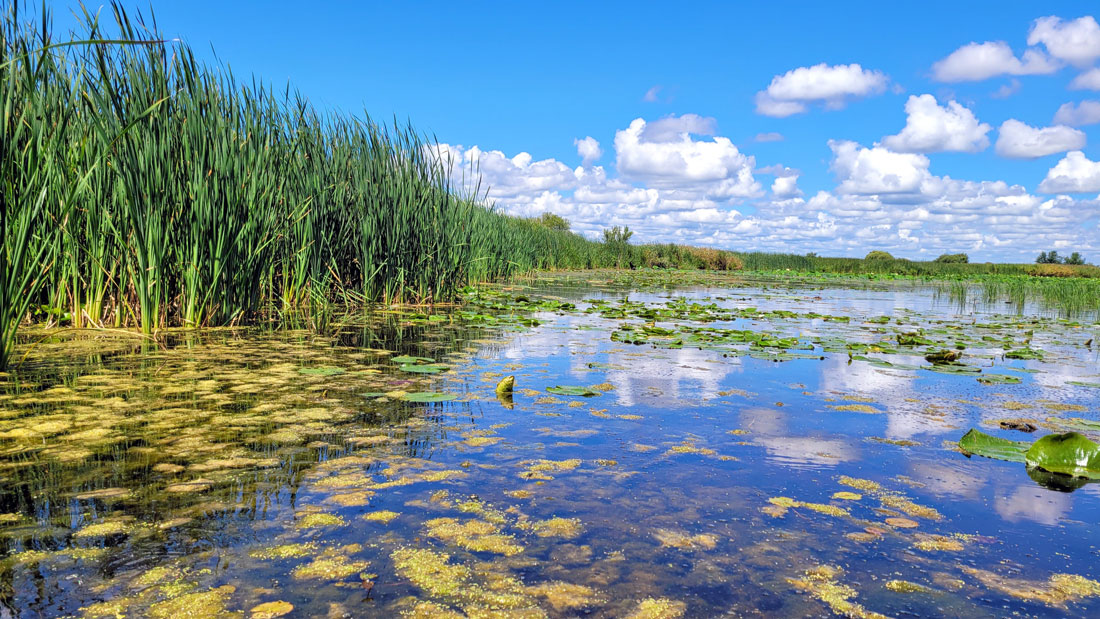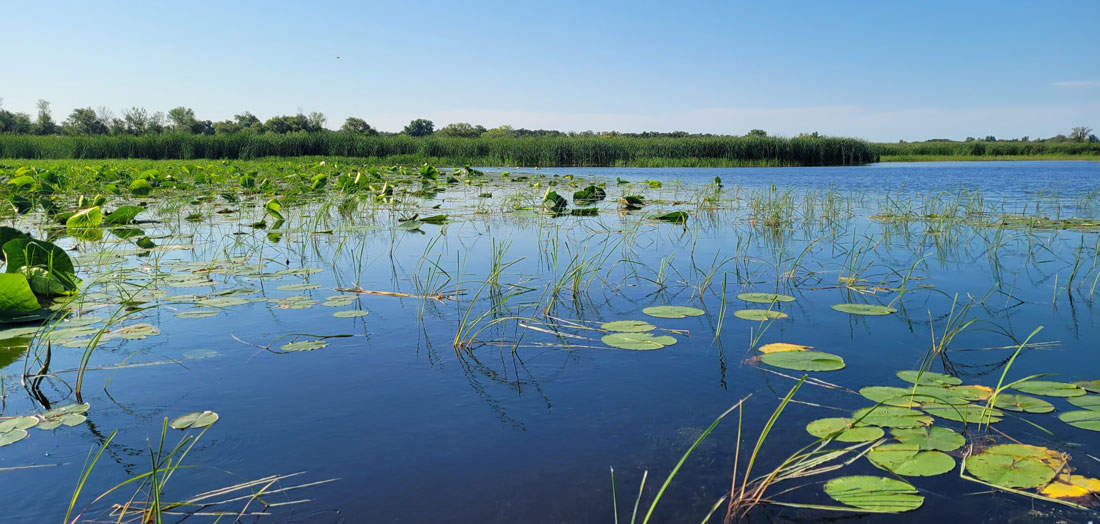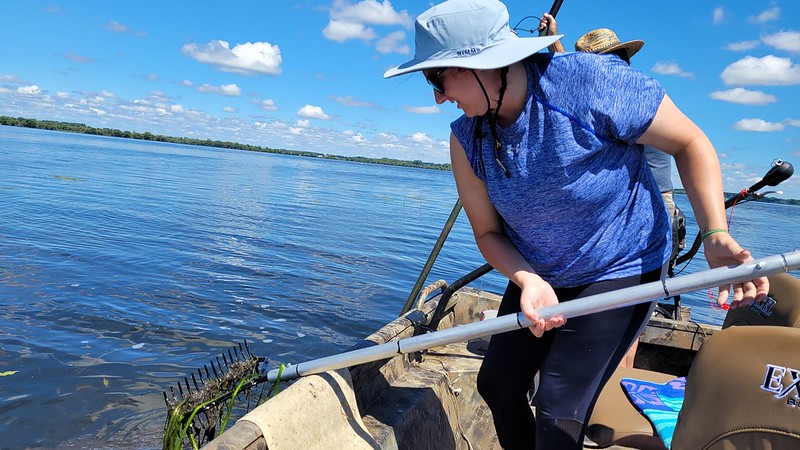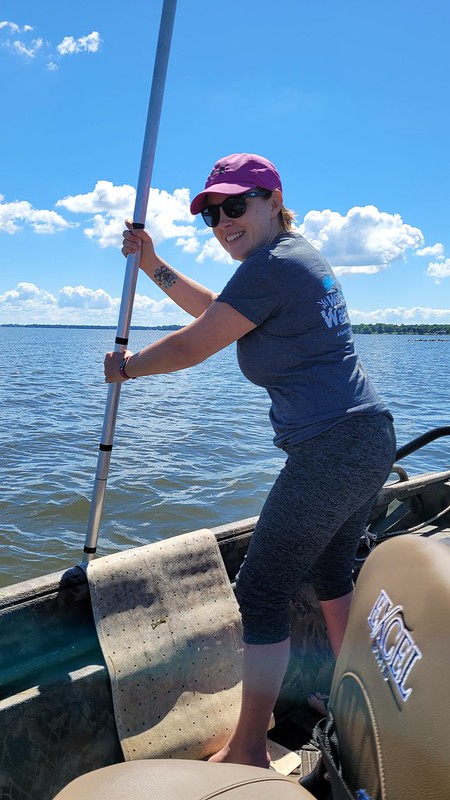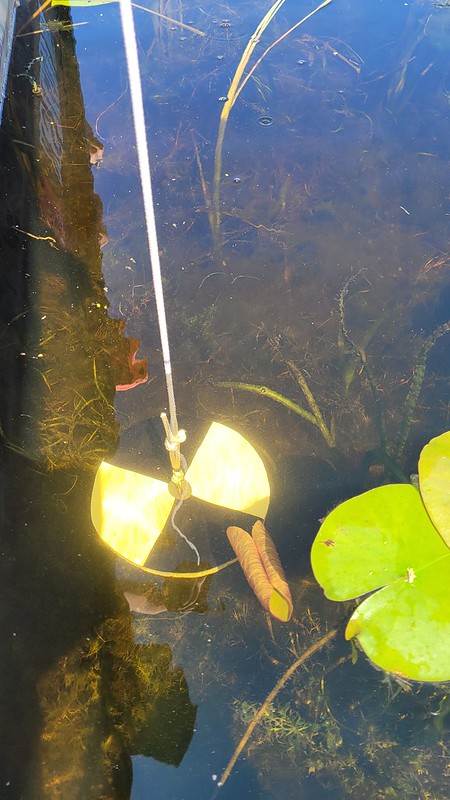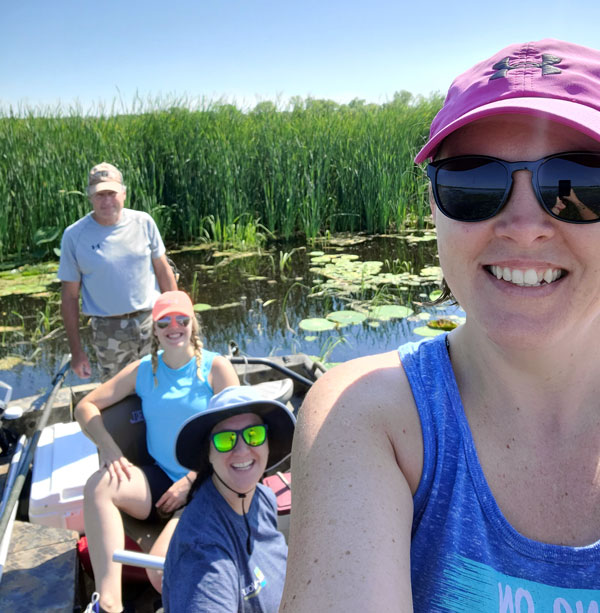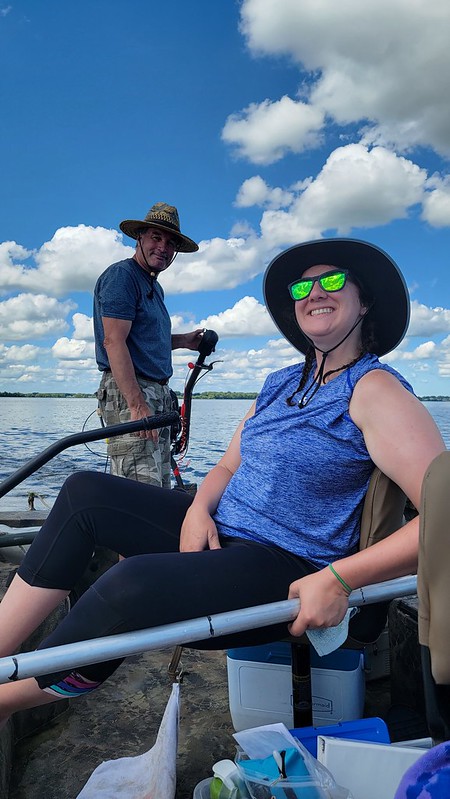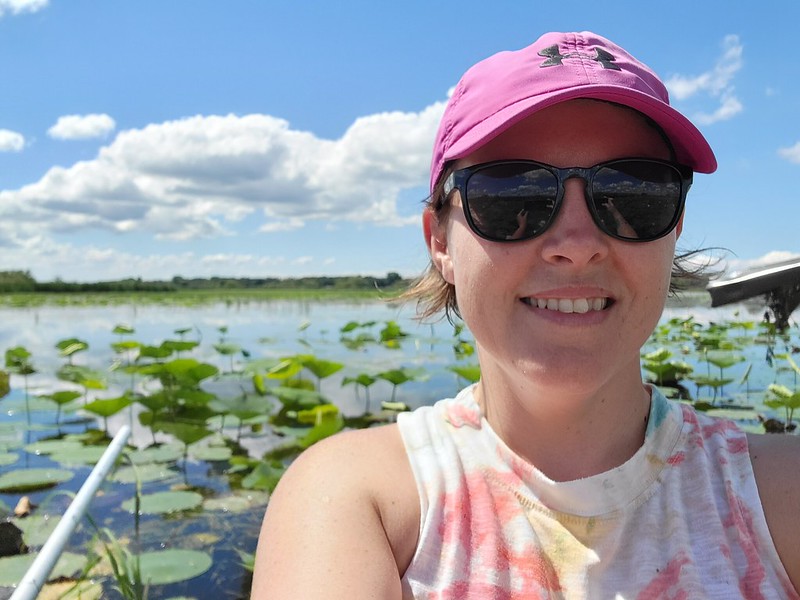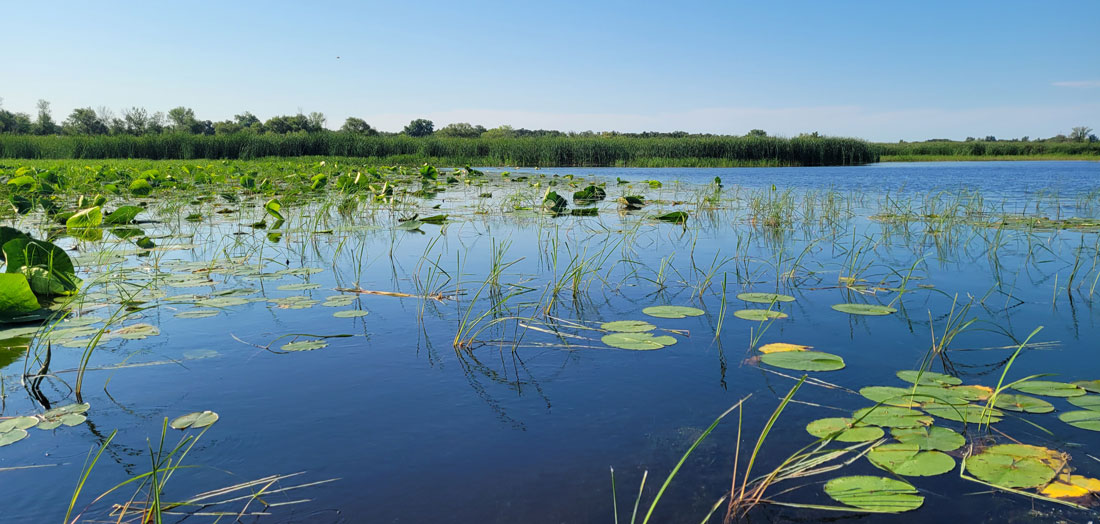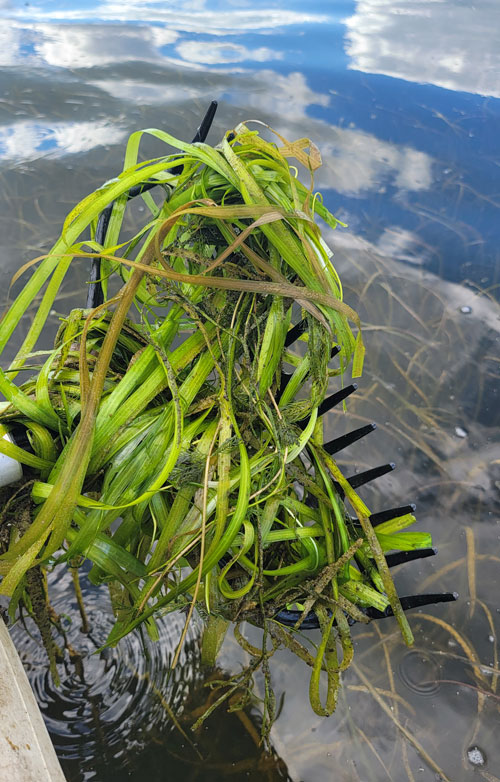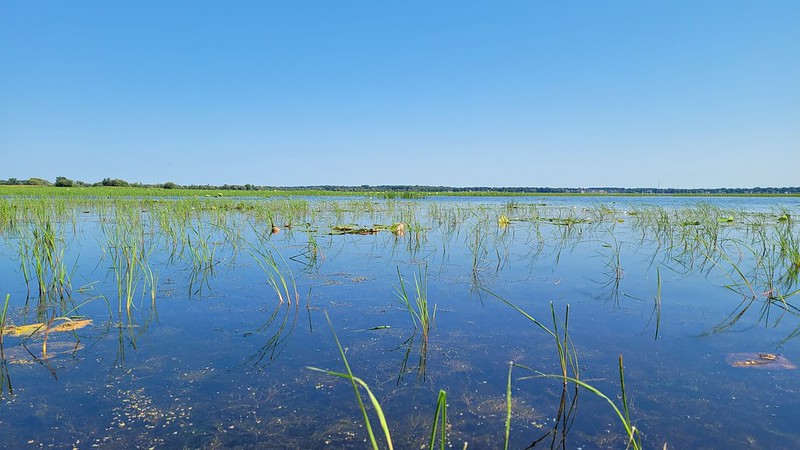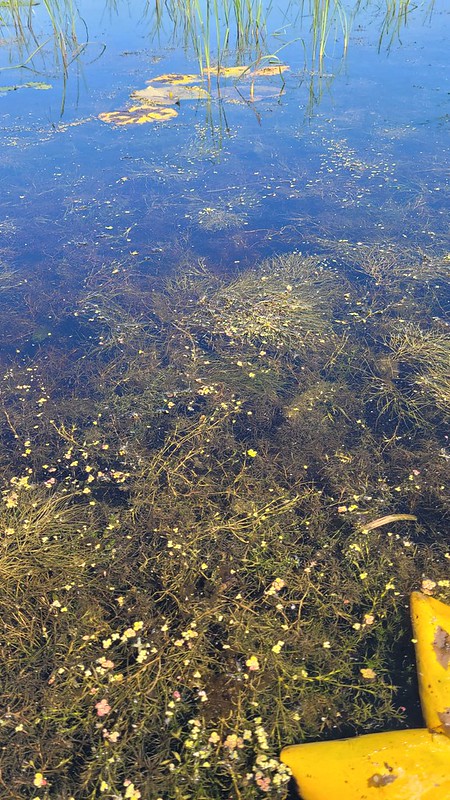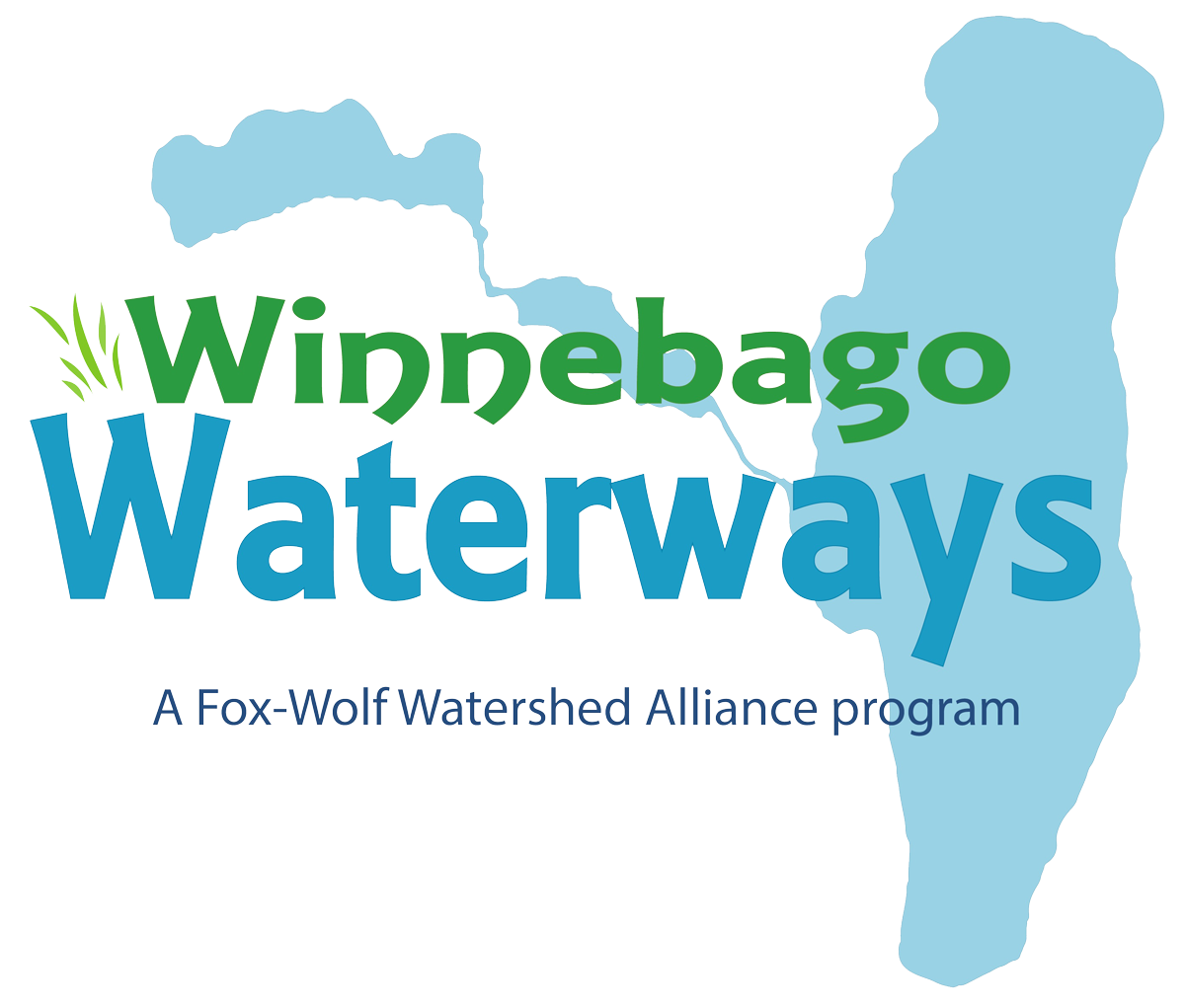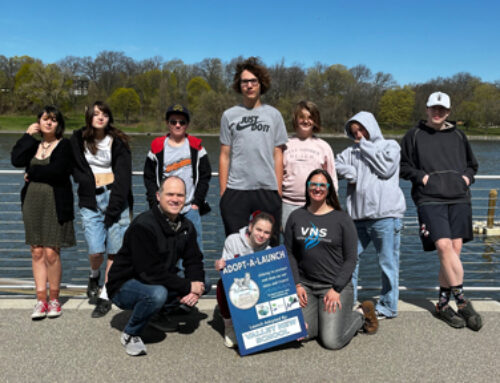The water quality (e.g., total phosphorus, water clarity) and biological conditions (e.g. algal community, aquatic plants, fishes) within the breakwall at Terrell’s Island are currently degraded. Data collected by Ted Johnson (WI DNR) during the summers of 2014 and 2016 indicated that total phosphorus was consistently 1.5 to 2 times higher within the breakwall at Terrell’s Island than at stations outside the breakwall in Lake Butte Des Morts. Water clarity was also about 2 times lower inside the breakwall based on Secchi Disk depth data.
Plant surveys within the breakwall have indicated very low density in recent years. The poor habitat quality within the breakwall is likely due a combination of factors including nutrient inputs from white pelicans, cormorants and waterfowl and weak hydrological connection between inside the breakwall and the open water of Lake Butte des Morts.
The Wisconsin DNR, Butte des Morts Conservation Club, Winnebago County LWCD, and Fox-Wolf have proposed a large-scale restoration project to remove a large section (2,200 feet) of the Terrell’s Island breakwall. The goal is to improve hydrological connection and nutrient flushing inside the breakwall. The rock removed from Terrell’s Island will be used to construct a new breakwall in Samers Bay. CLICK HERE to learn more.
Because of the substantial loss of wetlands in the Winnebago System over the last 170 years, one of the major goals of lake restoration in the Lakes has been wetland creation and protection. In addition to the Terrell’s Island breakwall, several additional smaller, not fully enclosed breakwalls have been constructed in Lake Buttes Des Morts by Winnebago County. These breakwalls will continue to be an important tool for restoring wetlands and fish and wildlife habitat in the Winnebago Lakes.
Fox-Wolf Watershed Alliance, UW-Oshkosh, and WI DNR have partnered on a project to assess the effectiveness of the two breakwalls on improving water quality and habitat in Lake Butte des Morts. The results of this evaluation project will also result in the development of a standardized protocol for assessing future breakwall construction and restoration projects throughout the Winnebago System.
Project Roles
Dr. Stelzer at UW-Oshkosh will lead the water quality sampling efforts as well as coordinate data collection and analysis. He and his students will participate in the biological sampling in collaboration with the Wisconsin DNR. He will also lead the development of a written standardized protocol for assessing future breakwall construction and restoration projects in the Winnebago System. Staff at the WI DNR and Fox-Wolf Watershed Alliance will sample aquatic vegetation and WI DNR will conduct fish surveys. Fox-Wolf will manage the project and provide assistance throughout the study to project partners.
Project Activities
- Conduct pre/post project water quality sampling and data analysis;
- Establish a standardized protocol for monitoring break-wall projects;
- Write final report;
- Update Winnebago Waterways Lake Management Plan to reflect results of this study;
- Incorporate an educational component into the project for UW-Oshkosh students and community.
Project Objectives
- The main objective of this project is to monitor the impact of a large breakwall restoration project (which will be performed by the Wisconsin DNR at Terrell’s Island in Lake Butte Des Morts) on the water quality and biological communities (algae, fish) at Terrell’s Island.
- A secondary objective is to provide a framework for evaluating breakwall habitat restoration projects on the Lake Winnebago System. The results of this project will be used to inform the lake management plan for the Winnebago System that is currently being developed by Fox-Wolf.
Project Description
The study will utilize a Before-After-Control-Impact (BACI) design to evaluate the ecological impacts of breakwall restoration at Terrell’s Island. The current break wall is about 3 miles in length and completely encloses a body of water of about 640 acres within Lake Butte des Morts. Water quality and biological monitoring will occur during a Before period (i.e., prior to partial breakwall removal) in summer of 2020 at two Reference sites outside of the breakwall and at the Impact site within the breakwall. Monitoring will continue during and after period in summers of 2021, 2022, and 2023 at the Reference and Impact sites.
Water quality & biological variables will be measured Before & After breakwall restoration at three sites. A sampling grid, consisting of 6 sampling points, will be established within the breakwall. Sampling will occur monthly during May through August from 2020-2023. Water quality & biological impacts of breakwall restoration will be evaluated by comparing the site differences (Impact minus Reference) for each variable between the Before & After periods. Several water quality variables will be measured including total phosphorus, turbidity, Secchi Disk depth & dissolved oxygen. Biological variables to be measured will include chlorophyll-a, plant communities, & fish communities. Robert Stelzer, a professor in the Department of Biology at UW Oshkosh, will lead the water quality and chlorophyll-a sampling. Aquatic plant surveys and fish surveys will be led by Ted Johnson & Adam Nickel at the Wisconsin DNR.
There will be a significant educational component to the project. In addition to the students from Dr. Stelzer’s lab that will participate in data collection, Dr. Stelzer plans to bring entire environmental science and ecology classes from UW Oshkosh to the study site to participate in data collection for class projects. Dr. Stelzer will also share the results of the overall project with his classes (about 220 students per year) which will be another way that the results from the project will be disseminated. The graduate student that works on this project from Dr. Stelzer’s lab will present his/her results at the annual Wisconsin Lakes Convention.
Project Timeline
Pre-construction monitoring will take place during the spring and summer of 2020. Post-construction monitoring will occur during the spring and summer of 2021, 2022, and 2023.
Project Funding
The total cost of the project is estimated to be approximately $37,500. Primary sources of funding are cost-share funds from the WI DNR Surface Water Grant Program that are being met with match from NRDA funding and the Winnebago Waterways Intergovernmental Cooperative Agreement. Fox-Wolf Watershed Alliance and UW-Oshkosh are providing in-kind match through staff time and volunteer hours.
Project Contacts
Questions? Comments? Please contact Korin Doering, Winnebago Waterways Director, at (920) 851-0948 or korin@fwwa.org.
What are off-shore breakwalls?
Off-shore breakwalls are a line of rock riprap located in open water parallel to the shoreline typically adjacent to eroding wetlands. Learn more about breakwalls here: CLICK HERE
Project updates:
Project Partners:

Project Photos:
Winnebago Waterways is a Fox-Wolf Watershed Alliance recovery initiative. Contact us at wwinfo@fwwa.org


